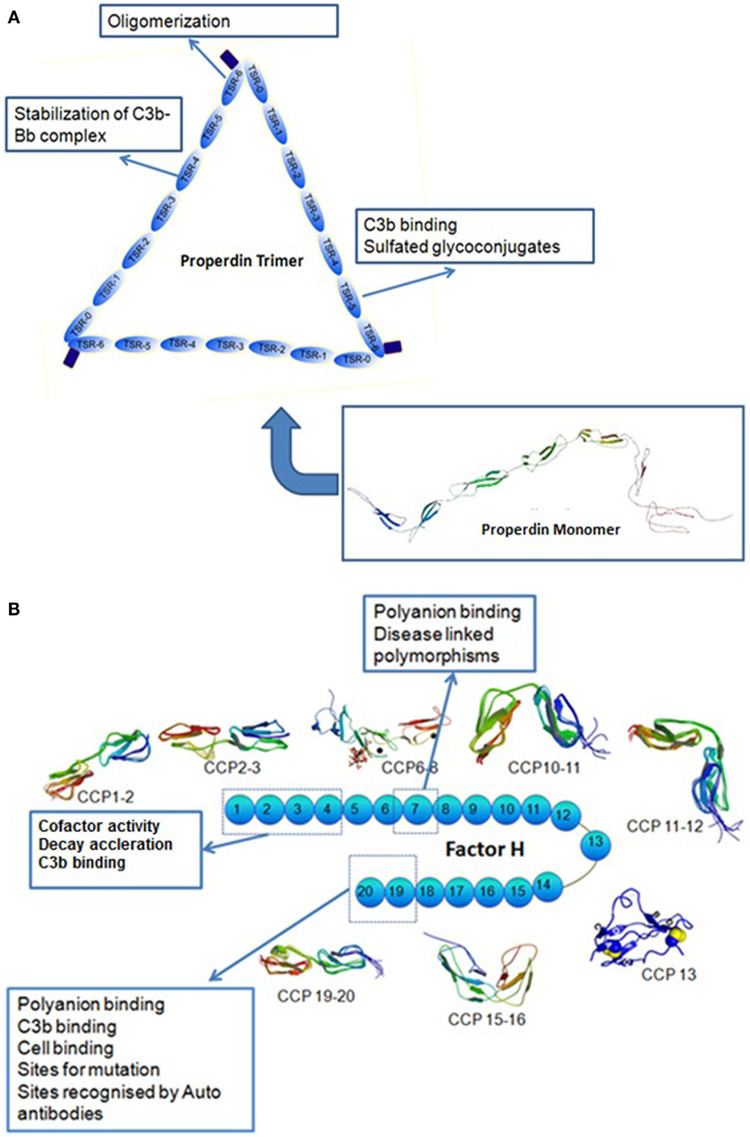Entrez 5199 | Ensembl ENSG00000126759 | |
 | ||
Aliases CFP, BFD, PFC, PFD, PROPERDIN, complement factor properdin, Properdin External IDs MGI: 97545 HomoloGene: 1969 GeneCards: CFP | ||
Properdin or Factor P is the only known positive regulator of complement activation that stabilizes the alternative pathway convertases. It is found in the blood serum of more complex animals.
Contents
Structure
Properdin is a gamma globulin protein composed of multiple identical protein subunits with a separate ligand-binding site. Native properdin occurs in head-to-tail dimers, trimers and tetramers in the fixed ratio 22:52:28.
Function
It is known that it participates in some specific immune responses. It plays a part in tissue inflammation as well as the engulfing of pathogens by phagocytes. In addition it is known to help to neutralize some viruses.
The properdin promotes the association of C3b with Factor B and provides a focal point for the assembly of C3bBb on a surface. It binds to preformed alternative pathway C3-convertases. Properdin also inhibits the Factor H – mediated cleavage of C3b by Factor I.
The alternative pathway is not dependent on antibodies. This branch of the complement system is activated by IgA immune complexes and bacterial endotoxins, polysaccharides, and cell walls, and results in producing anaphylatoxins, opsonins, chemotactic factors, and the membrane attack complex, all of which help fight pathogens.
History
Properdin was discovered in 1954 by Dr. Louis Pillemer of the Institute of Pathology (now the Department of Pathology at Case Western Reserve University).
Deficiency
Properdin deficiency is a rare X-linked disease in which properdin is deficient. Affected individuals are susceptible to fulminant meningococcal disease.
